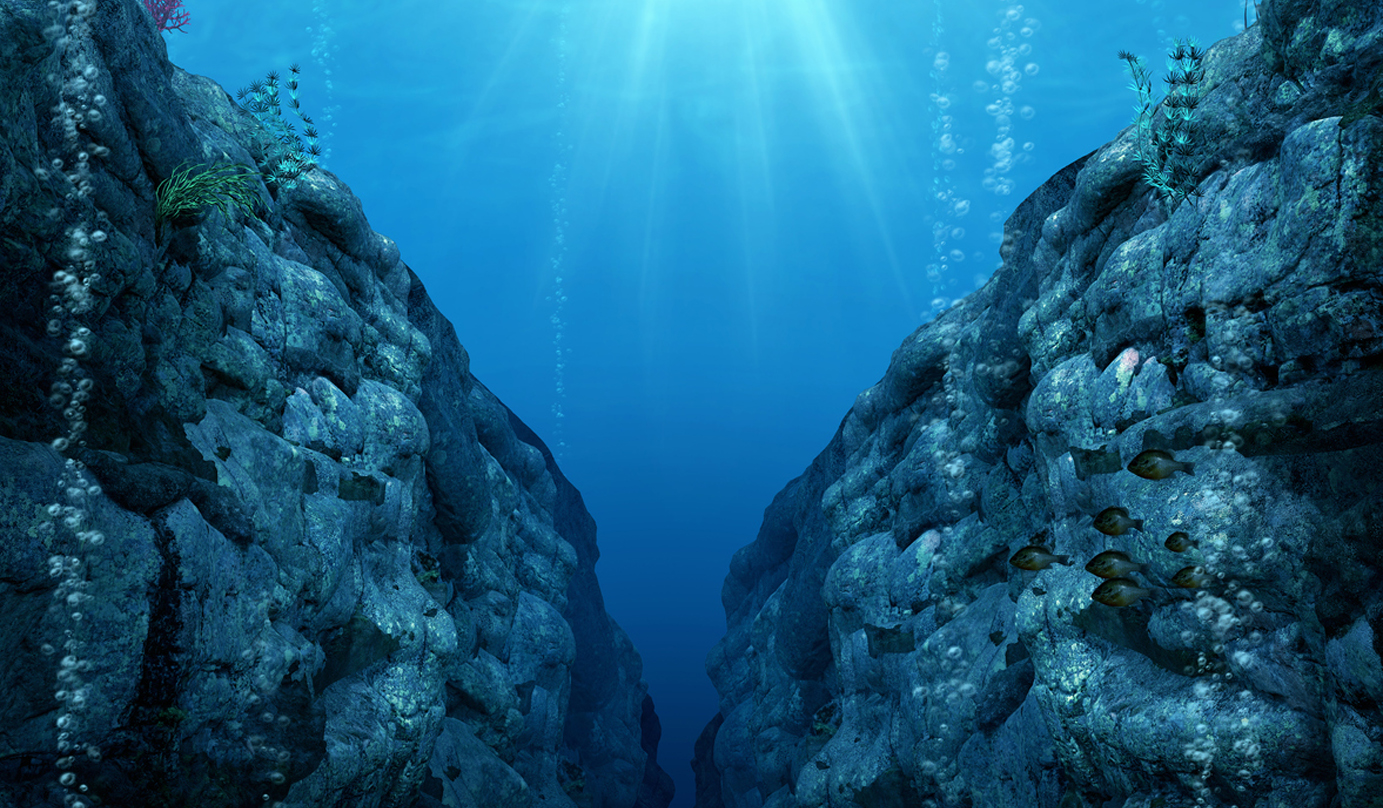
In the western Pacific Ocean, to the east of the Mariana Islands, is the Mariana Trench. Reaching a depth of 10,994m at its deepest point, the Mariana Trench is the deepest part of the world's oceans. These trenches exist because of Earth's tectonic plates. They show convergent plate boundaries, where lithospheric plates move towards each other. The rate that they move at varies. We can see a trench when subduction occurs. This is when one plate goes under another. Trenches are typically V-shaped, which makes them different from troughs.

The deep sea is the lowest layer in the ocean, existing at a depth of 1,800m or more. At this depth, little or no light penetrates from the surface. Because of this, scientists once thought that this part of the ocean must contain only sparse life, if any.

However, all voyages into the deepest parts of the ocean, the hadal zone, have shown that life is actually quite abundant here. The deep sea is teeming with organisms, both predator and prey, that call the deep sea their home. However, life is not easy in the deep sea! Animals that thrive in the deep sea have found ways to overcome the challenges posed by the lack of sunlight and oxygen, as well as the intense pressure.

Deep-sea creatures often look and live very differently than animals found in the biosphere. Organs like lungs don't function well in high-pressure surroundings. Many deep-sea animals are made out of water and gelatinous material, which doesn't get crushed under high pressure.

Even with abundant life, there isn't a lot of food in the deep sea. Most plant life is not able to make it thousands of feet below to the bottom of the trench. Instead, many microorganisms sustain themselves with methane or sulphur. The bacteria are able to start a process called chemosynthesis. This is when chemicals are converted to nutrients. Many microbial life forms thrive in this environment. Other organisms might consume those that are lower in the food chain. The most common denizens in the deep sea include xenophyophores, amphipods, and small sea cucumbers.

Xenophyophores look like giant amoebas, and they eat by going around their food and absorbing it. Amphipods resemble shrimp and they're scavengers. These sea cucumbers look very different from the ones in shallower waters. They're translucent!

Because there isn't light in the deep sea, many deep-sea creatures are blind and rely on their other senses. The yeti crab was discovered in 2005. Its nickname comes from its furry resemblance to the mythical yeti. This unusual, hairy crab has no eyes and uses its large claws to scavenge and hunt.

The vampire squid, on the other hand, has the largest eyes of any animal in the world, proportional to its body size. This deep-sea creature uses its massive eyes to take in what little light there is around it. Despite what its name suggests, the vampire squid does not suck blood! Its name comes from its intensely red eyes.

The goblin shark is sighted so sporadically that very little is known about it. Those who see one, however, are unlikely to ever forget it. The goblin shark has a long, flattened snout and jaws containing prominent nail-like teeth. It has been called a 'living fossil' due to its similarity to fossilized remains of prehistoric creatures.

These oceanic habitats harbour a lot of unique and precious lives. Many scientists think there are still many discoveries to be made in our oceans. Although we may think the deep sea is distant and inaccessible, it has become a place polluted with debris and other unwanted items. Some harmful chemicals that were banned decades ago still exist in our waters, and they're entering the body systems of aquatic life. We may not have time to make more discoveries if we continue to destroy our oceans.

The United States has jurisdiction over the Mariana Trench. The Mariana Trench Marine National Monument was created to establish a protected marine reserve. This reserve includes 506,000km2 of seafloor, the waters around the islands, and underwater volcanoes. What other mysteries will we find in the deep sea?